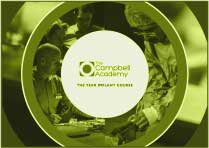
After a long time in preparation for me and my guys at the practice, the Digital Symposium kicks off tomorrow and lasts until Saturday lunchtime. It’s going to be an amazing event, as I write this I am looking at the brochure for it and it’s been out together almost exclusively by Anna Hurst at Henry Schein. It’s a tremendous job bringing together such a huge event.
For me and for us it has taken a lot of work to get together what we’re presenting which is a video of a guided surgery case.
In itself this doesn’t sound like much but it’s one of the most difficult anterior aesthetic implant cases you’re ever likely to see in terms of surgical implant placement and that is no mistake. It would be very easy for me to demonstrate a very easy case therefore encouraging everybody to go straight into the exhibition hall and buy all their digital equipment and go straight back to their practice only to encounter many situations that they just couldn’t fathom using digital technology because there is a huge and steep learning curve associated with this that we are only just at the very start of.
It’s brave of Henry Schien to ask me to speak at this because they know what I’m like – I’m the guy that swore too much at their sales meeting when presenting. I’m the guy who says what he believes is right, not what he is getting paid for. What’s right about digital dentistry, when done correctly, is that it improves the outcomes for patients.
As I write this we have just finished a lower anterior implant case, two dental implants for a four-unit bridge in the anterior mandible. This is the case that made me go into digital implant placement in the first place when I had problems with lower anterior cases and the position of dental implants. The case went like a dream today, so well in fact that I didn’t touch the patient once and the work was carried out by my colleague Beatriz.
It’s essential though over the next couple of days to get several messages across to anybody who is interested in entering this world –
1. You don’t need all the kit initially to get going to see if it’s for you. You can outsource your CT scans and your STL scans of models and you can pilot digital implant placement in your practice to see if it works financially and logistically for you and your team.
2. Secondly, and much more importantly, is that you have to make the assessment as to whether investing in this is going to benefit your patients because that’s the only way it’s going to work from a business perspective.
There’s no point in us all telling each other that it does work for patients without being able to prove it, so to provide some research and some audits and to be able to present some figures on what’s working and what isn’t is extremely important.
From our point of view, almost half of the surgical guides we started with in the first hundred were not used because they didn’t fit. That was because we were finding out how to work the system, how to debug it and what parameters worked the best. We have a much more predictable system now but it takes a while to do this and t’s not something you can master or embrace when you’re still trying to master and embrace the basic skills of placing dental implants.
In any event it should be a great do on Friday and Saturday and I look forward to seeing anybody else there. I hope people attend and have a great time.
Blog Post Number - 1270





Leave a comment